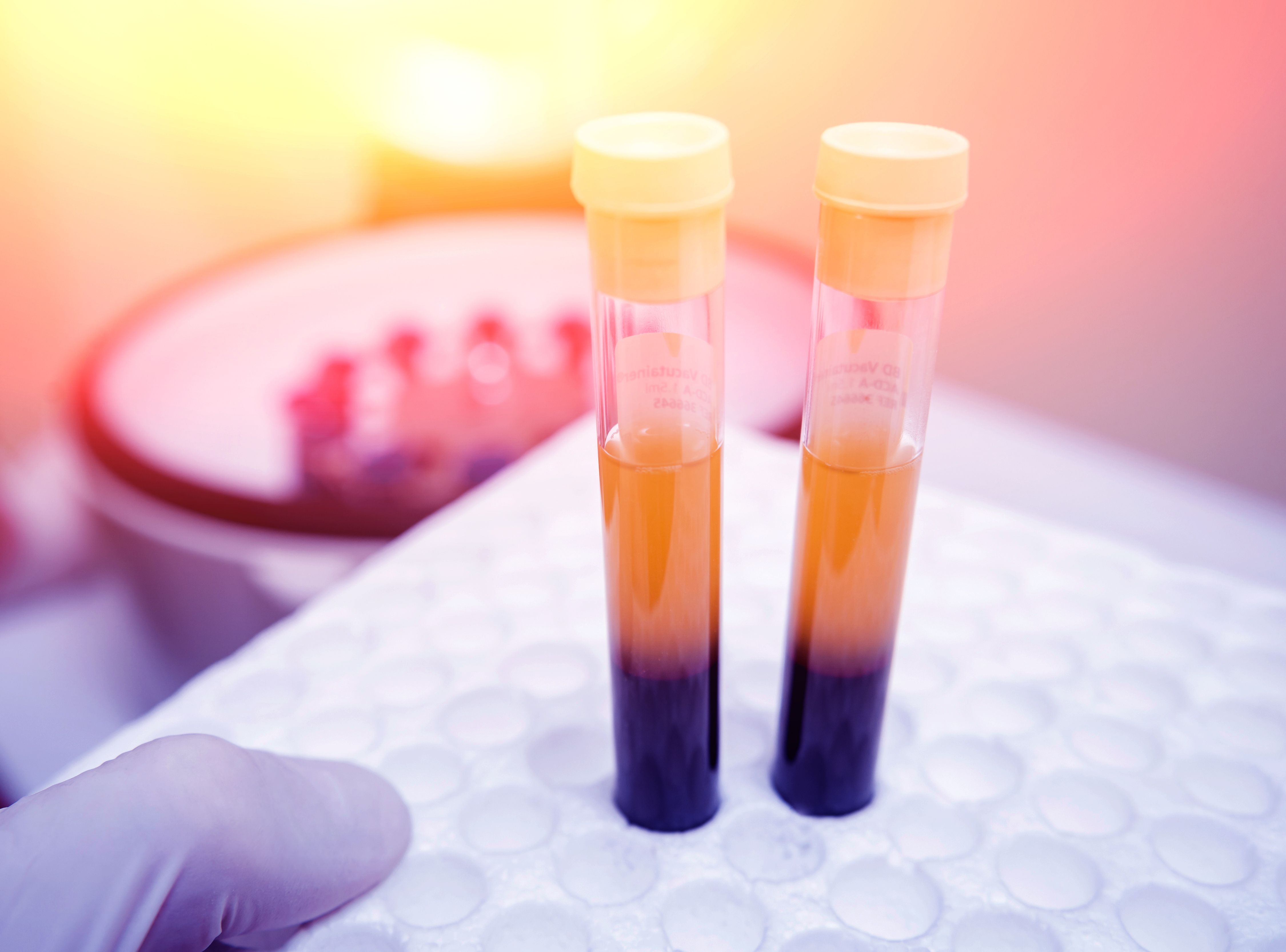New Study Investigates Factors Affecting Ion Mobility Spectrometry
A new study tested different solvents and buffer additives for ion mobility spectrometry to test their impact on results.
A recent study published in the Journal of the American Society for Mass Spectrometry has examined the influence of various additives and chemical ionization on adduct formation in electrospray ionization (ESI) and ion mobility spectrometry (IMS) (1). The study, led by Christian Thoben at Leibniz University Hannover in Germany, explored the effects of different solvents and buffer additives on detected ion mobility peaks using ESI. They also investigated the impact of plasma ionization on the ions formed by electrospray.
Platelet-rich plasma preparation. Tube with blood in hands. Centrifuge. | Image Credit: © romaset - stock.adobe.com

Electrospray ionization-ion mobility spectrometry (ESI-IMS) is a hybrid analytical technique that combines the principles of electrospray ionization and ion mobility spectrometry. ESI is used to ionize analytes in a sample, which are then introduced into the IMS. IMS separates ions based on their mobility through a gas under the influence of an electric field. The resulting ion mobility spectra provide information on the size, shape, and charge of the ions, which can be used to identify and characterize the analytes in the sample.
By coupling high-resolution IMS with a time-of-flight mass spectrometer, the researchers found that the ionization process can be influenced by the addition of certain solvents and buffer additives. For example, the herbicide isoproturon showed different ion mobility peaks depending on whether 5 mM sodium acetate or 5 mM ammonium acetate was added. The former resulted in the formation of the sodium adduct [M + Na]+, while the latter produced the protonated species [M + H]+.
Interestingly, the study found that the addition of sodium acetate could completely suppress ionizations for certain analytes such as the herbicide pyrimethanil. Careful selection of solvent additives for ESI-IMS or additional chemical ionization can aid in the formation of different ion mobility peaks, making it easier to assign ions to specific peaks using IMS as a standalone instrument for onsite analysis.
This research sheds light on the complex factors that can impact ion mobility spectrometry, a technique used in a variety of applications, including forensic science, environmental monitoring, and medical diagnosis. Understanding these factors can help researchers optimize IMS techniques and improve the accuracy of their results.
Reference
(1) Thoben, C.; Hartner, N. T.; Raddatz, C-R.; Eckermann, M.; Belder, D.; Zimmermann, S. Regarding the Influence of Additives and Additional Plasma-Induced Chemical Ionization on Adduct Formation in ESI/IMS/MS. J. Am. Soc. Mass Spectrom. 2023. DOI: https://doi.org/10.1021/jasms.2c00348
Rethinking Chromatography Workflows with AI and Machine Learning
April 1st 2025Interest in applying artificial intelligence (AI) and machine learning (ML) to chromatography is greater than ever. In this article, we discuss data-related barriers to accomplishing this goal and how rethinking chromatography data systems can overcome them.
Study Explores Thin-Film Extraction of Biogenic Amines via HPLC-MS/MS
March 27th 2025Scientists from Tabriz University and the University of Tabriz explored cellulose acetate-UiO-66-COOH as an affordable coating sorbent for thin film extraction of biogenic amines from cheese and alcohol-free beverages using HPLC-MS/MS.
Quantifying Microplastics in Meconium Samples Using Pyrolysis–GC-MS
March 26th 2025Using pyrolysis-gas chromatography and mass spectrometry, scientists from Fudan University and the Putuo District Center for Disease Control and Prevention detected and quantified microplastics in newborn stool samples.
Multi-Step Preparative LC–MS Workflow for Peptide Purification
March 21st 2025This article introduces a multi-step preparative purification workflow for synthetic peptides using liquid chromatography–mass spectrometry (LC–MS). The process involves optimizing separation conditions, scaling-up, fractionating, and confirming purity and recovery, using a single LC–MS system. High purity and recovery rates for synthetic peptides such as parathormone (PTH) are achieved. The method allows efficient purification and accurate confirmation of peptide synthesis and is suitable for handling complex preparative purification tasks.






